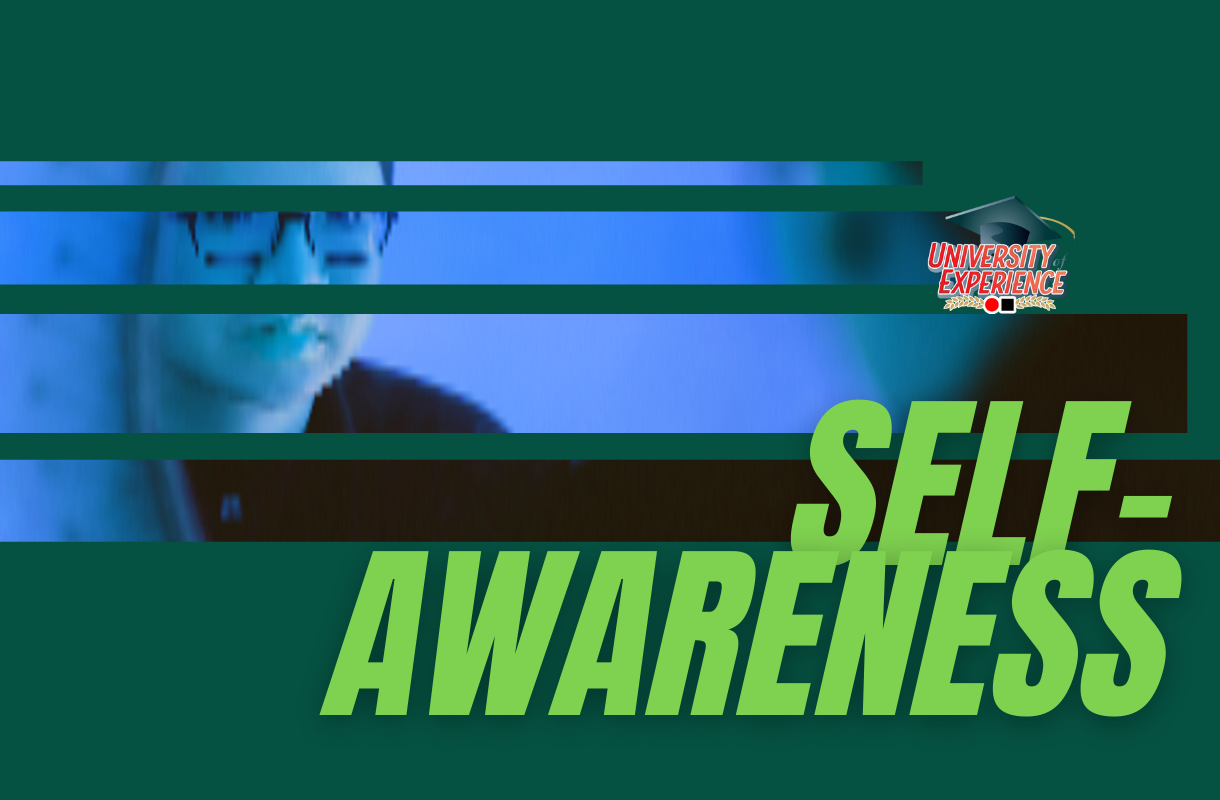By Manuel “Bobby” M. Orig, Director, ApoAgua
If you are not self-aware, it’s almost impossible to master the skills that make stronger teams, superior leaders, and better relationship builders.
A summary of INSIGHT by Tasha Eurich
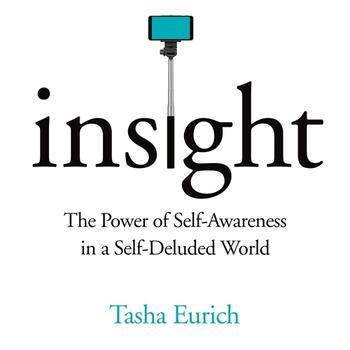
Regardless of our line of work or stage of life, understanding who we are and how we come across is crucial. The qualities essential to success in today’s world, – things like emotional intelligence, empathy, influence, persuasion, communication, and collaboration – all stem from self-awareness.
Self-awareness is a rare quality. Research shows that it is the foundation of high performance, smart choices, meaningful relationships, and a fulfilling career. Yet most of us are remarkably poor judges of ourselves and how we come across. And it is rare to get candid, objective, feedback from colleagues, employees, friends and family.
Fortunately, reveals organizational psychologist and New York Times best-selling author Tasha Eurich, self-awareness is a developable skill. Integrating hundreds of studies with her own research and work in the Fortune 500 world, this-first-of-its-kind study shatters conventional assumptions about what it takes to truly see ourselves.
Praise from Alan Mulally, retired CEO of Boeing Commercial Airplanes and Ford Motor Company:
In this groundbreaking and thought-provoking book, Tasha Eurich shows how we can all seize that single greatest opportunity for continual growth and improvement and performance. It’s the book I wish I’d had when starting out in business and the book I’d recommend to anyone who wants to cultivate the kind of self-knowledge that is the bedrock of personal and professional success.
About The Author

Dr. Tasha Eurich is an organizational psychologist, researcher, and New York Times bestselling author. She has built a reputation as a fresh, modern voice in the business world by pairing her scientific grounding in human behavior with a practical approach to improvement. Over her 15-plus-year career, she has helped thousands of professionals – from Fortune 500 executives to early stage entrepreneurs – improve their self-awareness and success.
With a PhD in Industrial-Organizational Psychology and BAs in Theater and Psychology, Eurich contributed to The Guardian, Huffington Post, TED.com and CNBC and has been featured in Fortune, Forbes, The New York Times and Fast Company. She has been named a “Top 100 Thought Leader” by Trust Across America, and a “Leader to Watch” by the American Management Association.
Her TED MileHigh talk has been viewed more than a million times.
Introduction
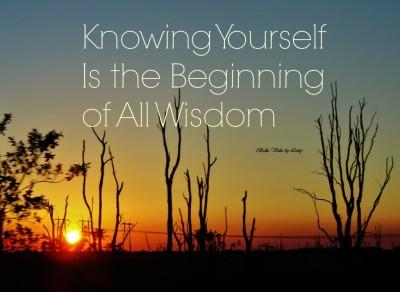
Dr. Eurich wrote Insight for anyone who wants to make the leap from self-blindness to self-insight, and in turn reap the rewards of smarter choices, stronger relationships and a better life. Her goal is to show people how to survive and thrive in an increasingly unaware world.
Self-awareness is, at its core, the ability to see ourselves clearly – to understand who we are, how others see us, and how we fit into the world around us.
The author and her research team found there is strong scientific evidence that people who know themselves and how others see them:
- make smarter decisions
- have better personal and professional relationships
- are more creative, more confident, and better communicators
- are better performers at work who get more promotions
- are more effective leaders with more enthusiastic employees
- lead more profitable companies.
The author calls these people self-awareness unicorns.
On the flip side, a lack of self-awareness can be risky at best and disastrous at worst. In business, regardless of what we do or what stage we are at in our careers, our success depends on understanding who we are and how we come across to our bosses, clients, customers, employees, and peers.
This becomes even more important the higher you ascend on the corporate ladder.
The qualities essential to success in today’s world, – things like emotional intelligence, empathy, influence, persuasion, communication, and collaboration – all stem from self-awareness.
To put it another way, if you are not self-aware, it’s almost impossible to master the skills that make stronger teams, superior leaders, and better relationship builders – at work and beyond.
We are quick to accuse others of being unaware, but we rarely ask ourselves whether we have the same problem.
The truth is that while most people think they know themselves pretty well, this confidence is often unfounded. Researchers have established that our self-assessments “are often flawed in substantive and systemic ways.” We tend to be terrible judges of our own performance and abilities.
The scariest part is the least competent people are usually the most confident in their abilities.

What does it mean to be self-aware? Without a clear definition of self-awareness, how could you develop an empirical method to help improve it?
To answer these questions, the author and her research team reviewed more than 750 studies to see what patterns emerged. They unearthed two main characteristics of self-awareness:
- Internal self-awareness has to do with seeing yourself clearly.
It’s an inward understanding of your values, passions, aspirations, ideal environment, patterns, reactions, and impact on others.
People who are high in internal self-awareness tend to make choices that are consistent with who they really are, allowing them to lead happier and more satisfying lives.
Those without it act in ways that are incompatible with their true success and happiness.
- External self-awareness is about understanding yourself from the outside in – that is, knowing how other people see you.
Because externally self-aware people can accurately see themselves from others’ perspectives, they are able to build stronger and more trusting relationships.
Those low in external self-awareness are so disconnected with how they come across that they are often blindsided by feedback from others who are brave enough to tell them.
Very often, by the time they hear this feedback, their relationships are too far gone to be salvaged.
The good news is that the author’s research has shown that self-awareness is a developable skill.
The Seven Pillars Of Insight
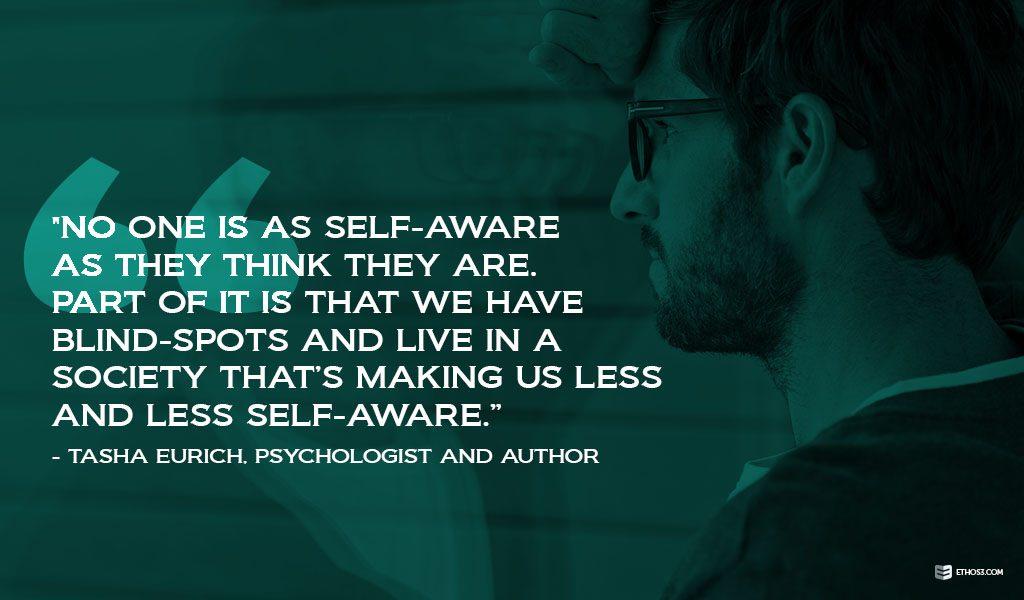
Dr. Eurich asserts that unicorns – the people from her study who dramatically improved their self-awareness as adults – possessed seven distinct types of insight that unaware people did not.
These Seven Pillars of Insight are those that enable us to understand ourselves:
- VALUES – the principles that guide them.
- PASSIONS – what they love to do.
- ASPIRATIONS – what they want to experience and achieve.
- FIT – the environment they require to be happy and engaged.
- PATTERNS – consistent ways of thinking, feeling, and behaving.
- REACTIONS – the thoughts, feelings, and behaviors that reflect their capabilities.
- IMPACT – the effect they have on others.
Developing a clear set of values is the first and critical step in becoming self-aware. In particular, values define the person we want to be and provide a standard for evaluating our actions.
When we understand our passions – we are finding what we love to do forever.
What does it mean to really understand our aspirations?
While setting goals is relatively easy, they don’t always lead to true insight. Instead of asking, “What do I want to achieve?” the better question is “What do I really want out of life?”
While goals can leave us feeling deflated and disappointed once we have achieved them, aspirations are never fully completed. We can get up every morning feeling motivated by them all over again.
When we determine where we fit, the type of environment we require to be happy and engaged, we get more done with less effort, and end the day feeling like our time was well spent.
The pillar of fit builds on the ones before it: only by knowing what you value, what you are passionate about, and what you want to experience in life can you start to create a picture of your ideal surroundings.
Our patterns are our consistent ways of thinking, feeling, and behaving across situations.
For example, if your coworker snaps at you one morning, she might just be tired. But if she snaps at you most mornings, then she probably has a pattern of being easily annoyed or hard to please.
Recognizing and understanding our patterns, especially the self-defeating ones, helps us to take charge.
As for reactions, let’s take the case of Susan. She was doing the best she could. Though she was constantly stressed, she threw everything she had into her role. One day, completely out of the blue, Susan was abruptly fired. As she shifted through what happened, she realized that her unawareness of her real time reactions – the thoughts and feelings, and behaviors that reveal our capabilities – had come back to bite her. Her reactions to her coworkers, especially under stress, were unmasking a serious weakness: her inability to control her emotions.
Since her shocking realization, Susan has worked to manage this weakness and better monitor her reactions. In her new found job, when she’s stressed, she now pays careful attention. Is she cutting people off? Does she seem agitated? When she feels herself becoming abrupt, she makes a point to pause, think, and soften her tone.
Notice that each of the seven pillars of insight has been about us:
- What we value
- What we are passionate about
- What we aspire to do
- What environment we need
- How do we behave
- How we respond to the world.
But to be self-aware, we must also build on the seven pillars to understand our impact: how our behavior affect others.
Over the course of our daily lives, we often encounter people who appear completely oblivious to this. For example:
- The boss who assigns an arbitrary emergency project on a Friday afternoon, paying no attention to his employees’ groans and sighs.
- The man in the grocery store blocking an entire aisle while a mother with a stroller waits to pass.
The key skill we must develop to read our impact on others is perspective-taking or the ability to imagine what others are thinking and feeling.
Here is one study that powerfully demonstrates the impact of perspective-taking on the pillar of impact.
Researchers surveyed more than 100 couples every four months for a year on their feelings of mutual satisfaction, intimacy, trust, passion and love for their partner. During the period of the study, the couples, who were married an average of 11 years, showed “robust declines in marital quality.”
The researchers wanted to see whether anything could turn the tide. So they asked their participants to write about a conflict in their marriage.
Compared to couples who simply wrote about the conflict,
- those who were instructed to write about how “a neutral third party who wants the best for all” would view the conflict, saw the decline in marital satisfaction reverse completely over the following year.
By rising above their own perspective and seeing their problems through their spouses’ eyes, they became more level headed and less defensive. This mindset helped them better understand how their actions were impacting their spouses, and in turn, start treating them better.
The Insights
• BE “INFORMERS” NOT “MEFORMERS”

The Cult of Self is the biggest and most powerful obstacle to self-awareness. Cults tend to show a misplaced or excessive admiration for a particular person or thing. And this cult has chosen an irresistible figurehead: you!
It is easy to see why the promise that the Cult of Self makes can be too tempting to resist.
- It lulls us into thinking that we are unique, special, and superior.
- That our needs matter more than anyone else’s.
- That we are not subject to the same rules as other people.
- That we are deserving of things simply because we want them.
Most of us do not think we are narcissistic or have an excessive interest in ourselves.
The good news is that only 4 percent of the population actually fits this diagnostic criteria.
The bad news is that the remaining 96 percent of us can display some narcissistic behaviors, at least some percentage of the time.
As you go about your daily life, how much time and energy do you spend focused on you? It’s probably more than you think. One study found that we spend up to 60 percent of our talking time discussing ourselves, and when we are on social media that number jumps to a whopping 80 percent.
The self-awareness unicorns are different.
Overwhelmingly, their conversations online and offline, focus more on others – friends, coworkers, the events taking place in the wider world, etc.
One appropriately noted that “the world does not revolve around me.”
Another explained that his approach to interacting with others involves “being curious about something outside of myself.”
Researchers have discovered that people who use social media generally fall into two categories:
- 80 percent are so-called “Meformers,” who like to post messages that are all about telling everyone about what is going on with them.
- 20 percent are “Informers,” who tend to post non-self-related information – helpful articles, amusing observations, funny videos, etc. Informers tend to have more friends and enjoy richer, more satisfying interactions than “Meformers.”
The self-awareness unicorns were, to a person, Informers.
While they spend almost 20 percent more time on social media, they spend that time very differently. Instead of posting a selfie, an update about their vacation, or their latest achievement, they used the social media as a way to truly engage and stay connected with others.
The message here is clear: to move on from self-absorption to self-awareness, you should try to be an Informer – that is, focusing less on you and more on engaging and connecting with others.
Focusing on others, however, will not help us fight the Cult of Self on its own. We also need to cultivate humility and take a more realistic view of our own qualities. It means appreciating our weaknesses and keeping our successes in perspective. Humility is a key ingredient of self-awareness.
• ASK “WHAT” NOT “WHY” QUESTIONS
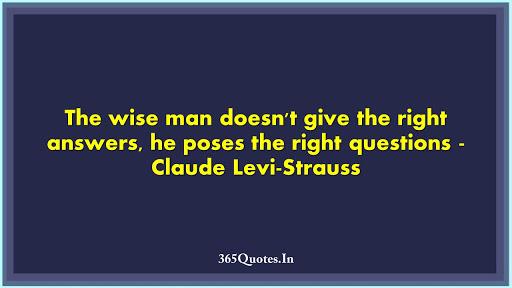
When it comes to internal self-awareness, a simple tool that can have a dramatic impact is what Dr. Eurich calls What Not Why.
As an example, she refers to her good friend Dan who is living a good life: he makes a lot of money, lives in a huge house, works from home a few times a week when he is not travelling to exotic destinations. Which is why the author was stunned to hear him say, “I am so unhappy. I think I need to sell my company. But I don’t know what else to do.”
When she asked Dan “Why do you want to change what you’re doing?” Dan started rattling off all of his personal shortcomings: “I’m bored easily. I’ve gotten cynical. I don’t know if I’m making any difference in the world.”
The “why” question failed to produce useful insight, and Dan became more confused when he tried to figure out why the spark has disappeared.
But when she changed course and asked: “What do you dislike about what you’re doing?” He thought for a moment and replied, “I dislike sitting in front of my computer and remotely leading a company. I just feel burned out and disconnected.”
“Okay, that’s helpful,” she replied. “What do you like?” Without hesitation, Dan replied, “Speaking. I like speaking.” He told her that when he was in front of an audience, he could make an immediate impact. This realization made Dan immediately more focused and clear-headed – he began to think about whether he could adapt his current role to spend more time sharing his message.
Less than five minutes of “what” questions had drawn out a high-value discovery and a potential solution to his problem. Dan’s experience is illustrative:
- Why questions draw us to our limitations; what questions help us see our potential.
- Why questions stir up negative emotions; what questions keep us curious.
- Why questions trap us in our past; what questions help us create a better future.
In his book, How the Mighty Fall, author Jim Collins says that when companies get wrapped up in what they are and do not understand why they got that way, they risk becoming extinct.
This highlights an important exception to the rule: when navigating challenges or solving problems in your team or your organization, asking why is critical.
For example, if an employee drops the ball on an important project, not exploring what happened means you risk recurrences of the problem. Or if a new product fails, you need to know the reason to ensure that products are better in the future.
A good rule of thumb then is:
- Why questions are generally better to help us understand our environment.
- What questions are generally better to help us understand ourselves.
• REFRAME YOUR CIRCUMSTANCES
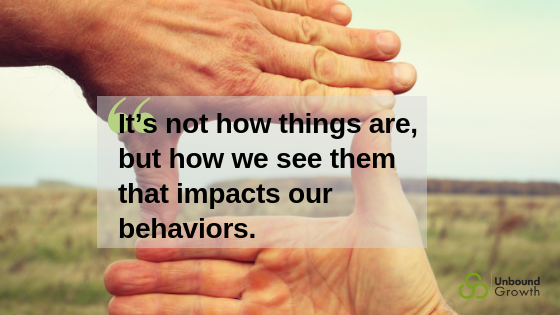
A great way to become self-aware and mindfully notice new things in ourselves and our world is Reframing. Which simply means looking at our circumstances, our behaviors, and our relationships from a new and different angle.
As an example, let’s look at the story of Aviana, a unicorn and a manager in a wireless telecommunications company whose courage in reframing her circumstances was a major force in achieving greater self-knowledge and in saving her career.
A few weeks after giving birth to her youngest son, she received devastating news. The company where she worked for the past 11 years would be closing. Everyone would be out of job. Worse yet, her husband worked there too. Her family was about to go from two incomes to zero overnight. Aviana was panicked and afraid.
Aviana wondered whether there was another way of looking at the situation. Instead of focusing on what I’m losing, she pondered, what if I focused on what I might gain? Yes, she was losing her job, but this could also be an opportunity to grow, and maybe even get a better job than the one she had.
Armed with this new perspective, Aviana quickly realized something. Right out of high school, she had taken a few semesters of college courses, but when they failed to hold her attention, she left to explore the working world. That had been a mistake, she realized, and this was her chance to make it right. So Aviana re-enrolled in an online undergraduate program while simultaneously applying for jobs.
When her last day of work arrived she handed her badge and was about to leave for home when her phone rang. It was the hiring manager calling about one of her company’s open positions! Before the manager had even finished offering her the job, Aviana exclaimed, “I’ll take it!”
The new position was a breath of fresh air. Since then, Aviana has received two promotions. And thanks to her company’s tuition reimbursement program, she’s close to finishing her degree in organizational leadership.
Aviana’s flexibility in reframing the loss of her job as an opportunity – rather than staying mired in a mindset of helplessness – dramatically improved her career and life.
• CANDID FEEDBACK IS CRITICAL TO GAIN INSIGHT

Imagine that you have been recruited to participate in a study on consumer preferences. You are asked to provide your opinion about men’s deodorant. The researcher leads you to a table with various brands grandly announcing that you’ll be evaluating each one of several factors like color and odor. The researcher finishes explaining the task and leaves the room.
A few seconds later, he bursts back in and asks, “Excuse me – are you Glen Lester?” You shake your head. The researcher says, “Well, Glenn is supposed to be here any minute. He just got a call – I’ll see if there’s a message.” A few moments later, the researcher returns and solemnly says, “Glenn should be told to call home as soon as he comes in. Apparently, there is some very bad news about his family that he needs to get right away.”
You wonder what that news could be, feeling sympathy for this man you’ve never met.
But here’s the million dollar question: When Glenn eventually arrives, what would you do? Would you tell him he has an important message? And if you did, would you tip your hand that it was in fact bad news?
This clever experiment was designed by University of Georgia psychologists Sidney Rosen and Abraham Tesser, and it was not really about men’s deodorant preferences. What Rosen and Tesser really wanted to know was whether people would be reluctant to communicate bad news than good news.
And that’s exactly what they found. When Glenn’s news was good – there was a second group where participants were told that his family had called with positive development – more than half eagerly spilled the beans as soon as Glenn entered the room.
But when the news was bad, five times fewer people passed along the complete message.
To describe this tendency, Rosen and Tesser coined the term MUM Effect, which stands for keeping Mum about Undesirable Messages. Their findings – confirmed by many subsequent studies – show that when we are in possession of information that might make someone uncomfortable, we tend to choose the path of least resistance: we simply decide to say nothing.
The first barrier to external self-awareness is other people’s reluctance to tell the truth.
The second is our reluctance to ask for it.
Most of us know we should be seeking more feedback than we are currently. Yet even when we have a rational reason to do something, our emotions can still stop us in our tracks because asking for feedback makes us uncomfortable. We instead find ways to justify our willful ignorance.
There are three primary excuses we make. Because they are designed to help us feel better about keeping our heads in the sand, the author calls them the Ostrich Trinity.

But pushing past these excuses is absolutely possible, and it requires just one simple decision: to seek out the truth on our own terms rather than leaving it in other people’s well-meaning but MUM hands.
The first excuse is: “I don’t need to ask for feedback.”
Having learned the MUM effect, we know that this is flat-out wrong – especially for leaders.
Whether or not we run a company, protecting our fragile egos by deciding we are right and others are wrong can be risky at best and devastating at worst.
The good news is that pushing past the first excuse of the Ostrich Trinity is fairly simple: we must decide to pull our heads out of the sand and recognize that others’ opinions are just as important for insight as our own.
The second excuse, “I should not ask for feedback,” is equally unfounded.
One study showed that 83 percent of top-performing leaders regularly solicit feedback, compared to just 17 percent of the worst performing ones.
We are socially and professionally rewarded for seeking critical feedback. Leaders who do are seen as more effective, not just by their bosses, but by their peers and employees.
Nearly three quarters of the unicorns have proactive strategy to get information from people who will tell them the truth. If we take a page from their book and master the courage to do so, we will be rewarded with self-insight and a new perspective on how we can improve.
The final excuse in the Ostrich Trinity is perhaps the most understandable: “I don’t want to ask for feedback.”
Feedback can be painful. Even though we intellectually understand its value, we fear it simply because it is a bitter pill to swallow. But while most people are afraid of feedback, the ease with which the self-awareness unicorns hear it should serve as an inspiration for the rest of us.
As it turns out, they have the same reactions as most people. As one sales executive quipped, “I hate hearing that I am not perfect!” But what makes unicorns truly special is the fact that they push through this fear, defensiveness, and vulnerability, and go for it anyway.
As U.S. President Franklin Roosevelt declared: “Courage is not the absence of fear, but rather the assessment that something else is more important than fear.”
And that something else is insight.
FOR ORGANIZATIONS, THREE BUILDING BLOCKS MUST BE IN PLACE TO DRIVE SELF-AWARE TEAMS
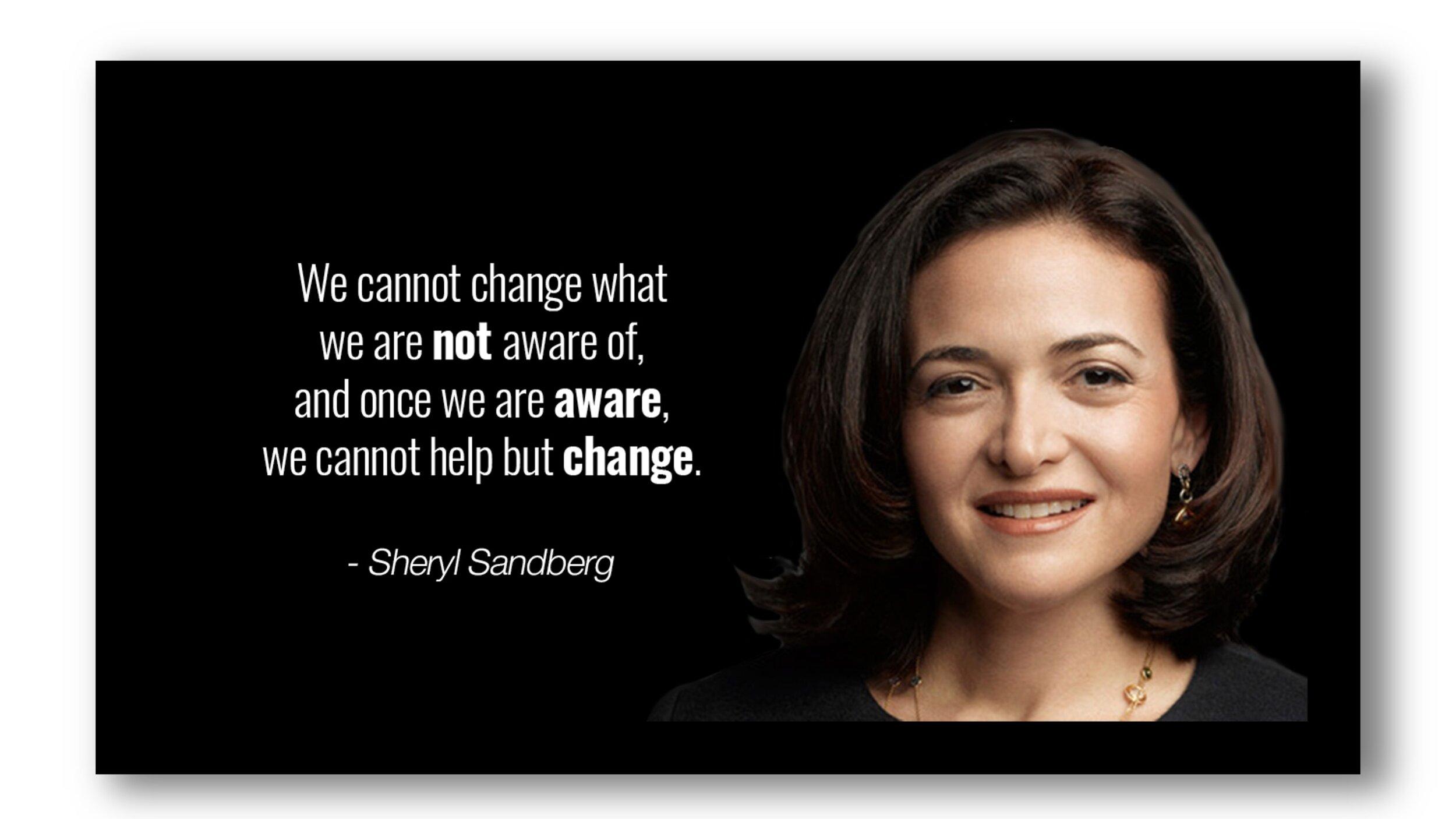
For individuals, being self-aware means understanding who you are and how others see you.
For organizations, being self-aware means teams commit to the same understanding at a collective level.
There are Three Building Blocks that must be in place for a leader to drive a self-aware team.
- First, a leader who models the way. If the team does not have this leader, the process will be seen as insincere.
- Second, psychological safety. If there is no psychological safety to tell the truth, the chance of a candid feedback is almost zero.
- Third, an ongoing process to ensure that the exchange of feedback is not just a one-time thing but is built into the team’s culture.
Building Block #1: A Leader Who Models the Way
No matter what challenges you are facing, self-aware teams must begin with a self-aware leader who models the way.
As Allan Mullaly, former CEO of Ford Motor Company said, “How far the team gets is completely dependent on the leader’s level of self-awareness.”
How can leaders model the way?
At the most basic level, a leader must communicate his/her principles and act in accordance with them. Psychologists refer to this constellation of behaviors as “authentic leadership,” and their value is unmistakable.
Harvard Business School Professor Nancy Koehn’s research found that there are four basic characteristics of authentic leaders:
- They’re Committed to Bettering Themselves
To become more effective at motivating and guiding others, authentic leaders need to focus first on bettering themselves. - They Cultivate Self-Awareness
A keen sense of self-awareness is one of the most important traits a leader can possess. Research shows companies that employ professionals who exhibit high levels of self-awareness tend to perform better financially. - They’re Disciplined
Being an authentic leader requires more than just building self-awareness – you need to put it into practice. And that requires discipline.Make it a point to check it for yourself as you complete daily tasks, such as delivering feedback and communicating with your colleagues, to ensure you’re bringing self-awareness to your role.
- They’re Mission-Driven
A deep and abiding commitment to a mission is integral to both authentic leadership and business success. According to a recent survey by EY and Harvard Business Review Analytic Services, 89 percent of executives said a sense of collective purpose drives employee engagement, and 84 percent said it leads to greater success in transformational efforts.
Building Block #2: The Safety and Expectation to Tell the Truth
In 1996, a doctoral candidate and now Harvard professor Amy Edmonson began what has since become a landmark study on the science of team self-awareness.
She wanted to better understand the reasons for medical errors among hospital-care teams. This is a pressing issue given that the average hospital patient is exposed to between 480 and 960 potential errors, which kill hundreds and injure more than a million people each year in the U.S. alone.
Edmonson followed eight hospital-unit teams over the course of six months. At first, she was puzzled to find that teams with better unit performance (quality of care, collaboration, efficiency, leadership, etc.) reported more errors. But as she examined the data further, she discovered the reason.
The poorer-performing units were not making fewer medication errors – they just were not reporting the ones they made. The reason? These nurses were terrified to do so, telling Edmonson that those who did got “put on trial” and “blamed for mistakes.”
In contrast, in the high-performing units – with the most reported errors – the nurses were comfortable openly discussing mistakes. On these teams, the nurses were not afraid to report that something had gone wrong.
Edmonson coined the term “psychological safety” to describe the shared belief that it is safe to ask one another for help, admit mistakes, and raise tough issues.
Edmonson explains: “The term is meant to suggest neither a careless sense of permissiveness, nor an unrelenting positive effect but rather a sense of confidence that the team will not embarrass, reject, or punish someone for speaking up.”
The first step for leaders wanting to cultivate psychological safety in their team is to work on building trust.
But trust alone is not sufficient for psychological safety. More than merely trusting that team members have one another’s best interests at heart, psychologically safe teams go a step further to show each other respect, sensitivity, and caring. And to do this, they have to see one another as a real human being with weaknesses and flaws.
Building Block #3: An Ongoing Commitment and Process to Stay Self-Aware
The Candor Challenge is a process designed and refined by the author over many years to instill ongoing self-awareness in teams.
“We’re going to do what?” asked one indignant Vice President during a management retreat conducted by the author.
Another said “With due respect, I honestly don’t see why this is necessary. Our business is booming.”
The VP of Finance said, “You must understand, we’re already the most self-aware team now. John is a fabulous president and does a great job modeling the way for us. So thank you Dr. Eurich, but I don’t really think we need to spend hours exchanging feedback.”
Theirs was a successful company that already had most of the building blocks of self-awareness in place.
But ironically, their success had created a new problem.
When things are going well, people are more apt to ignore the reality of potential issues, suppress difficult conversations, and put up with bad behavior.
In recent months, John had noticed an increased prevalence of turf wars seemingly popping up only to squabble about minor issues.
“They’re bickering like siblings!” he moaned.
The author told him, “I’ve seen this many times. It’s far easier for Vice Presidents to lock horns in a budget battle than talk about the deeper issues getting in the way of their working together.” We needed to figure what those issues were.
Back to the retreat, the author said, “Okay, I definitely hear you. But have you truly made an ongoing commitment to staying self-aware as a team? It would be unfair for me to tell you that this will be easy, but I promise you two things. First, the process works. And second, this will be one of the most important conversations you’ve ever had.”
The Candor Challenge takes place over a period of months or years, and begins with a Team Feedback Exchange, in which every member gets the chance to give their peers feedback on their strengths, their weaknesses, and what they can do to increase their contribution to the team’s success.
Then the author explained how it would work: each person would give feedback to each other answering three questions:
- What, behaviorally, does this person do that most contributes to our success?
- If this person could change one behavior to be more successful, what would it be?
- What behavior do I need from this person to help me be more successful?
Then the participants have to agree on a plan to keep the process going, which is called Accountability Conversations.
The team would circle back monthly and devote 30 or so minutes to a discussion: Each person would provide an update on what they were doing to make good on their commitment. Then they would ask the team for feedback, support, or anything else that would help them stay on the path toward improvement.
With that, John’s team filed out exhausted, exhilarated and deeply relieved.
But did the author live up to her promise to give them one of the most important conversations they’d ever had?
A few months later, she found out. If the Feedback Exchange was successful, the progress they made after it was extraordinary. Like any team, they had a few slips into old behaviors, but the difference was that they were now brave and committed enough to call each other out.
John explained, “As a team, we’re getting more done in the same amount of time. We’re surfacing critical issues and fixing them before they get out of hand. And what amazes me most is that the silos are basically gone – we’re working together as one team.”
While the Culture Challenge is designed primarily for the work setting, all teams can use it to cultivate and sustain a culture of self-awareness.
No matter what your goals are, the commitment to the process of getting and staying self-aware can be the difference between failure and success.
And the good news is that candor creates a virtuous cycle: the more honest you are with one another, the easier it becomes to be honest in the future. You’ll deepen your relationships, foster real collaboration, and dramatically improve your progress toward fulfilling your mission.
• KODAK’S FAILURE TO GRASP REALITY
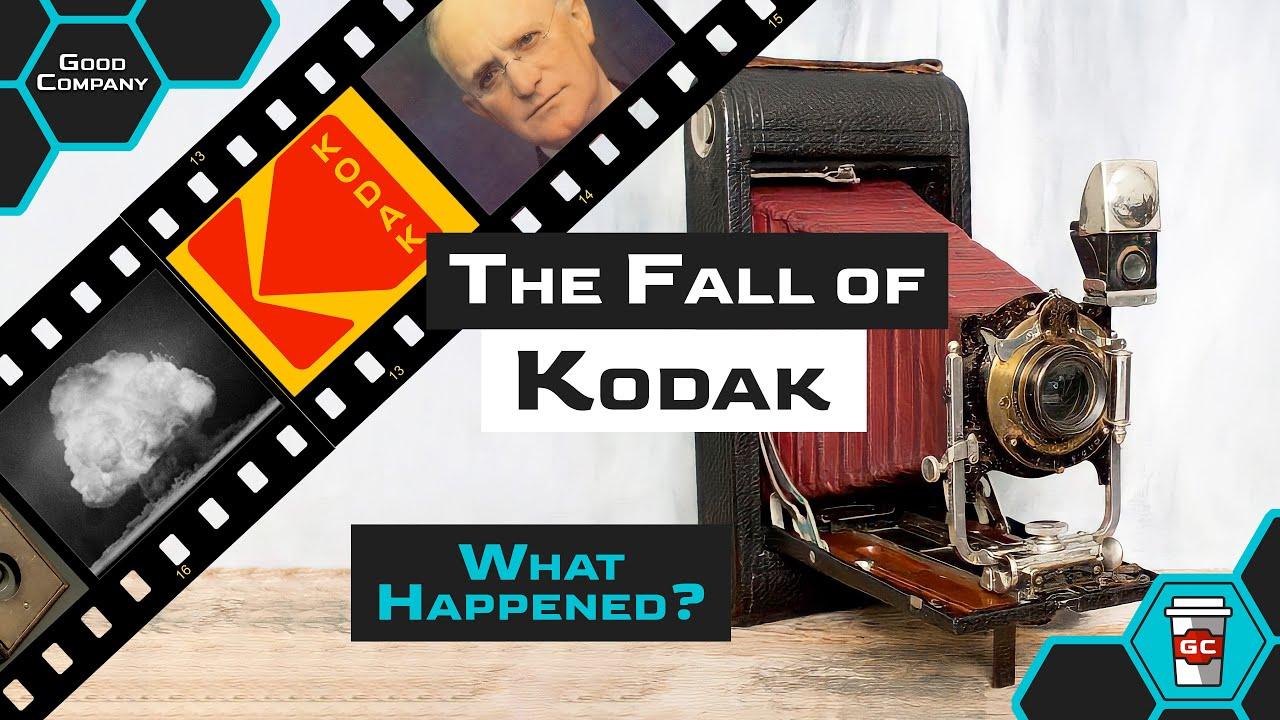
Kodak’s failure to be self-aware and grasp the changing realities – specifically, the birth of digital photography and the subsequent death of film, led to the company’s undoing.
In 1975, when Kodak electrical engineer Steven Sasson assembled a prototype of their first digital camera, management scrapped it because they believed the product would hurt their film business.
In the late 1970s, as Paul Carrol and Chunka Mui reveal in their book Billion Dollar Lessons, Kodak’s challenges soon mounted on the back of increasing pressure from its partners – from photo finishers to film retailers – to evaluate the long-term viability of traditional film. Their 1981 report concluded that their current business model would remain competitive only until 1990.
Yet instead of using the results as a rallying cry to reinvent their business and tell their stakeholders the truth, Kodak executives burrowed their heads deeper into the sand.
The final nail in the Kodak coffin came in January 2012 when the company filed for bankruptcy.
This is a chilling tale of what happens in the absence of awareness at an organizational level.
• CONCLUSION
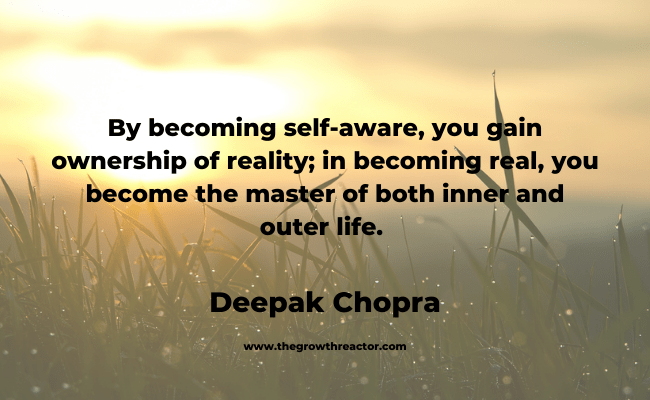
Self-awareness is not just for unicorns. Truly, we are all capable of gaining insight and reaping the resulting rewards:
- of recognizing our self-limiting behaviors and making better choices;
- of knowing what is most important to us and acting accordingly;
- of understanding our impact so we can improve our most important relationships.
The lifelong journey to understanding who we are and how we are seen can be a bumpy one, full of obstacles and roadblocks. It can be difficult, painful, and slow.
But this road is also paved with the greatest opportunities. Dr. Eurich quoted author C. Joybell C. to articulate this point:
“I think we are like stars. Something happens to burst us open; but when we burst open and think we are dying; we’re actually turning into a supernova. And then when we look at ourselves again, we see that we’re suddenly more beautiful than we ever were before.”
That is the power of self-awareness. It transforms us into supernovas – more beautiful, better, and brighter than we ever were before.
University of Experience is a special Aboitiz Eyes section that focuses on leadership insights from the unique experiences, perspectives, and wisdom of leaders who have stood at the helm of Aboitiz over the years.
If you enjoyed this article, would like to suggest a topic, or simply share your feedback, please CLICK HERE.

